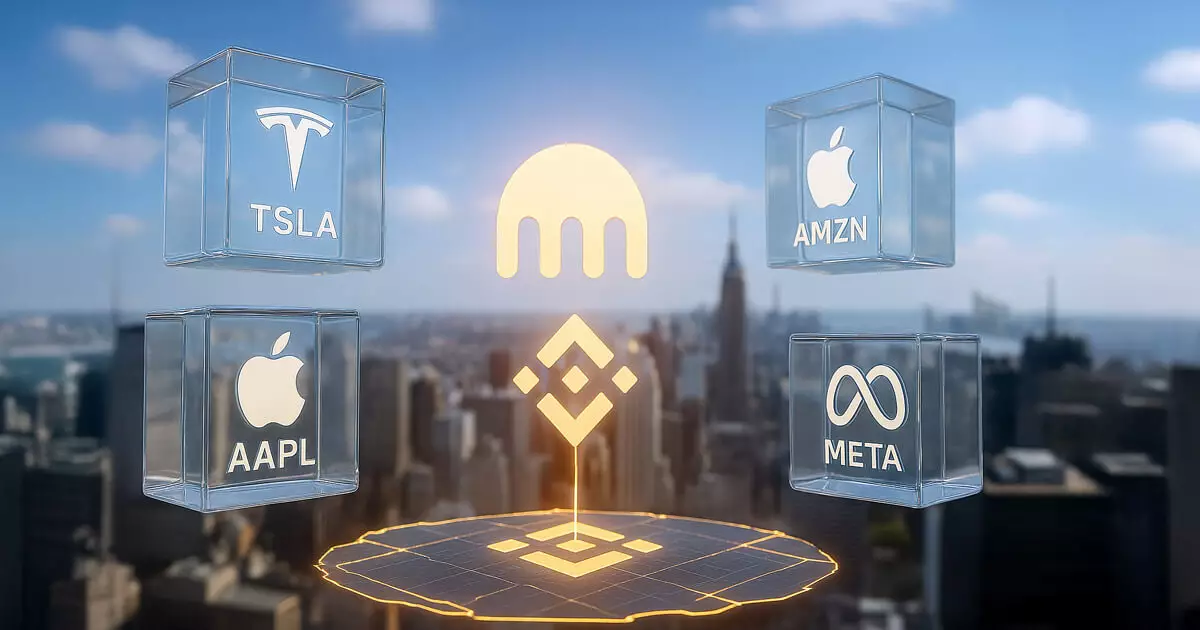In a bold move that signals the shifting landscape of global finance, Kraken has launched the expansion of its innovative xStocks product onto Binance-backed BNB Chain. This development isn’t just a tech upgrade; it’s a clear indication that the traditional boundaries of stock ownership and trading are being challenged by the rapidly evolving world of blockchain technology. By allowing users outside the United States to deposit and withdraw tokenized stocks—such as Apple, Tesla, and Nvidia—via a decentralized network, Kraken is pushing the limits of what is possible within conventional finance. This isn’t mere experimentation; it’s a game-changing step toward democratizing access to high-value assets on a global scale.
What makes this move profoundly significant isn’t just the technical integration, but the philosophy behind it. Co-CEO Arjun Sethi describes these tokenized equities as “programmable settlement primitives,” opening the door to instant cross-border transfers, atomic settlement, and seamless interaction with decentralized finance (DeFi) protocols. The promise of “multichain” fluidity dismisses the age-old constraints of jurisdiction and legacy custodial barriers, paving the way for a truly borderless financial ecosystem. While critics may worry about the stability or regulatory oversight of such systems, the reality is that the traditional financial infrastructure is increasingly at odds with the pace of innovation, and the market is eager for faster, more flexible solutions.
The Broader Industry Shift: Growth, Opportunities, and Challenges
This move by Kraken isn’t happening in isolation; it reflects a broader industry trend driven by the rising demand for tokenized assets. Major names like Robinhood and even traditional Wall Street institutions such as BlackRock are eyeing or investing in blockchain-based securities. The projection that tokenized assets could reach $30 trillion by 2030 reveals just how enormous this shift could become, threatening to overhaul many core aspects of asset management and securities trading.
However, the expansion of 24/7 trading and global liquidity access carries inherent risks. With no closing hours or geographic restrictions, volatile market swings are amplified, potentially leaving less informed investors exposed to unpredictable losses. Traditional exchanges, anchored in centralized infrastructures and structured trading hours, face enormous pressure to adapt or risk obsolescence. The old orders of the NYSE’s well-established dominance and its revenue model—centered around trading fees, data sales, and liquidity provision—are now actively challenged by decentralized platforms that emphasize real-time trading and borderless asset ownership. The transition could threaten the very foundations of legacy markets, as they may find it increasingly difficult to compete with the nimbleness and cost efficiencies of blockchain-based systems.
For conservative center-right thinkers who value stability, responsible regulation, and a balanced approach to innovation, this evolution sparks a mixture of cautious optimism and concern. While embracing technological progress and international market integration, there must also be vigilance against potential systemic vulnerabilities and the erosion of investor protections. As the industry accelerates toward this brave new world, the path forward must be navigated with prudence, ensuring that the benefits of tokenization do not come at the expense of long-term stability and trust in the financial system.

